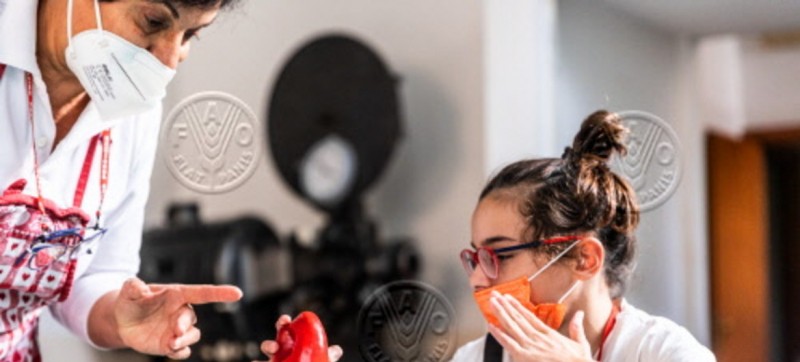Contents
09 October 2021, Rome, Italy – Demetra, a disabled child, manipulates vegetables to recognize them during a cooking class with cook Naheda in the church of Santa Maria Regina Pacis. Nearly 240 million children worldwide, or one in 10, live with disabilities and experience deprivation in indicators such as health, education and protection, according to a new report released by the UN Children’s Fund (UNICEF) on Wednesday. The agency’s Executive Director, Henrietta Fore, said the new research confirms what she already knew: children with disabilities face multiple and often compounding challenges, in simply realizing their rights. “From access to education, to being read to at home; children with disabilities are less likely to be included or heard on almost every measure. All too often, children with disabilities are simply being left behind”, Mrs. Fore said. Main findings
Nearly 240 million children with disabilities face challenges in getting access to basic needs including nutrition, health, access to clean water and sanitation, and education.
Our latest report uncovers the hardship children with disabilities face around the world.
— UNICEF (@UNICEF) November 10, 2021
Access to education is one of several key areas examined in the report.
Children with disabilities are 24 per cent less likely to receive early stimulation and responsive care, and have 42 per cent fewer chances of achieving foundational reading and numeracy skills. The probability of never attending school is 49 per cent higher for them.
In health terms, they have 25 per cent greater chance of suffering from wasting, and 34 per cent greater chance of stunted development. They are also 53 per cent more likely to have symptoms of acute respiratory infection.
These children are also 51 per cent more likely to feel unhappy day-to-day, and 41 per cent more likely to be discriminated against. The probability of experiencing severe corporal punishment is 32 per cent greater than for children without disability.
According to the report, however, the disability experience varies greatly.
There is a spectrum of risks and outcomes, depending on the type of disability; where the child lives; and what services they can access.
Education
Children who have difficulty communicating and caring for themselves are the most likely to be out of school, regardless of education level, explains the analysis.
Out of school rates are higher among children with multiple disabilities, and disparities become even more significant when the severity of the disability is taken into account.
Maria Alexandrova, 20, a UNICEF youth advocate for inclusive education from Bulgaria, said that “inclusive education cannot be considered a luxury.”
As a woman with disabilities, she says her experiences show that, for far too long, “children with disabilities have been excluded from society in a way that no child ever should be.”
“No child, especially the most vulnerable, should have to fight for their basic human rights alone. We need governments, stakeholders and NGOs to ensure children with disabilities have equal, inclusive access to education”, Mrs. Alexandrova said.
A new call
With the new publication, UNICEF is calling on governments to provide children with disabilities with equal opportunities.
Member States should also consult persons with disabilities and consider the full range of disabilities, as well as the specific needs of children and their families, when providing inclusive services and equitable quality education.
Stressing the importance of the new report, the UNICEF chief said that “exclusion is often the consequence of invisibility.”
“We have not had reliable data on the number of children with disabilities for the longest time. When we fail to count, consider and consult with these children, we are failing to help them reach their vast potential”, Mrs. Fore said.
Key indicators
The report includes data from 42 countries and covers more than 60 indicators, from nutrition and health, to access to water and sanitation, protection from violence and exploitation, and education.
These indicators are disaggregated by functional difficulty type and severity, child’s sex, economic status, and country.
The new global estimate for the number of children with disabilities is higher than previous estimates.
UNICEF said that the number is based on a more meaningful and inclusive understanding of disabilities, which considers difficulties across several domains, as well as symptoms of anxiety and depression.



